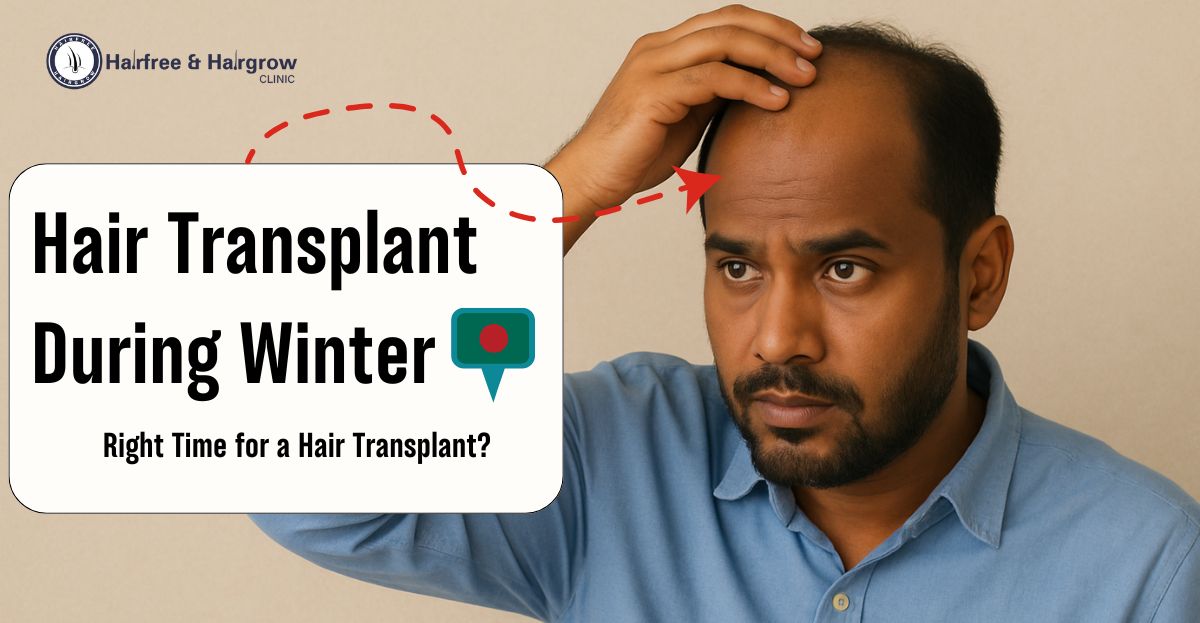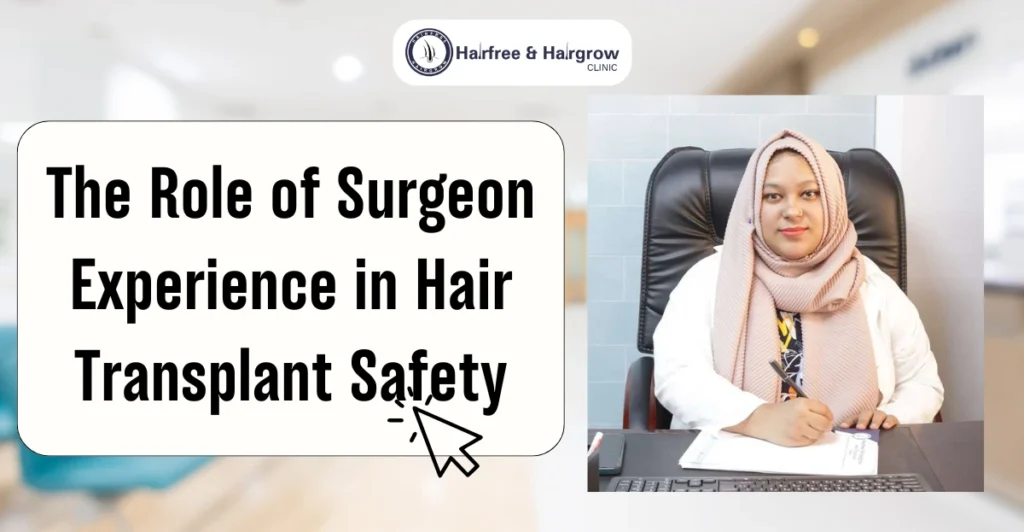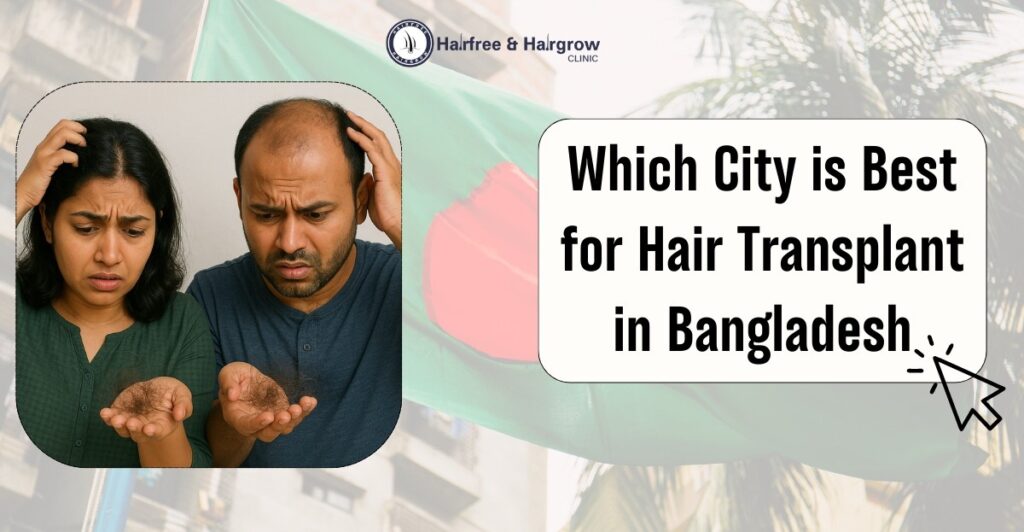Did you know that winter may be the best time for a hair transplant? Many patients ask, both in the clinic and on social media, if the weather affects results, and my answer is, yes, it absolutely can. Cooler months often create ideal conditions for faster healing and better comfort. Let me explain why.
Table of Contents

Why Winter Is a Great Season for Hair Transplants
Cooler Weather Helps Healing
After a hair transplant, your scalp becomes tender and sensitive. During summer, heat and strong sunlight can cause irritation or swelling. But in winter, the air is cooler and calmer, which helps reduce inflammation naturally. Your scalp stays comfortable, and you heal faster with less redness or itching.
Less Sweating, Less Risk
Hot weather makes you sweat, and sweat can irritate the scalp or even cause infection if not cleaned properly. In winter, sweat production drops, keeping your scalp clean and dry, exactly what new hair grafts need to grow securely.
Easier to Stay Indoors and rest.
After the procedure, you’ll need a few days of rest. During winter, you naturally spend more time indoors, which helps protect your scalp from dust, pollution, and sunlight.You can also wear a light cap or scarf comfortably to protect your head when going out.
Great Timing for Visible Results
When you do your transplant in winter, your hair starts growing by spring and looks fuller by summer. That means by the time the warmer months arrive, you’re ready to enjoy your new, natural look.
Before and After Surgery: Helpful Doctor’s Tips
Even though winter helps the recovery process, you still need proper care. Here are some key points:
- Moisturize carefully: Winter air can dry your skin. Use a mild, doctor-recommended moisturizer if your scalp feels dry.
- Avoid smoking and alcohol: These can delay healing by reducing blood circulation.
- Follow your surgeon’s instructions: Sleep with your head slightly raised, avoid scratching, and wash your hair only as directed.
- Be patient with results: Some shedding is normal after the surgery. New hair starts to grow in 3–4 months and continues to thicken for up to a year.
Step-by-Step Winter Recovery
- First week: Mild redness or swelling may appear. Cooler temperatures naturally soothe the scalp.
- Weeks 2–4: Scabs fall off; avoid rubbing or scratching. Keep your scalp clean and dry.
- Months 3–6: New hair begins to grow thin at first, but it gradually becomes denser.
- Months 6–12: The final stage of growth. Your hairline takes shape, and you’ll see full, natural results.
Why Bangladeshi Patients Choose Hair Free & Hair Grow Clinic Dhaka
When patients in Bangladesh look for trusted and experienced hair transplant centers, Hair Free & Hair Grow Clinic is often their first choice.
Experienced Doctors and Modern Techniques
The clinic uses advanced hair restoration methods like FUE (Follicular Unit Extraction) and DHI (Direct Hair Implantation). Their surgeons are trained to ensure every graft is placed with precision for a natural and lasting result.
Hygienic, Safe, and Comfortable Setup
Cleanliness is a top priority here. Every procedure is done under sterile conditions to prevent infection and ensure your comfort. The clinic environment feels modern, calm, and professional.
Personalized Care for Every Patient
Each person’s hair loss pattern is different. Hair Free & Hair Grow designs every treatment individually, from your hairline shape to the number of grafts and expected density.
Affordable, Transparent Pricing
The clinic provides high-quality treatment at prices that are much more reasonable compared to going abroad. You get international-standard care right here in Bangladesh without hidden charges.
Excellent Aftercare and Follow-up
Their aftercare is what patients appreciate most. Doctors and staff stay in touch, monitor your healing, and provide support for months after surgery. This strong aftercare builds trust and ensures long-lasting results.
Proven Results and Patient Trust
Thousands of Bangladeshis from Dhaka, Chattogram, Sylhet, and other cities share success stories after being treated here. They value the honest advice, compassionate care, and life-changing outcomes they received.
Planning Your Winter Hair Transplant
If you’re thinking about scheduling your procedure this winter, here’s how to plan smartly:
- Book your consultation early: ideally in November or December.
- Have your scalp evaluated: your doctor will check your donor area and discuss realistic results.
- Choose a winter date: cooler weather helps with comfort and healing.
- Follow all aftercare instructions: use the right shampoo, avoid sweat, and stay gentle on your scalp.
- Attend follow-ups: they’re essential to monitor growth and prevent complications.
Doctor’s Closing Advice
If you’ve been waiting for the right time to restore your hair and confidence, winter might be your best chance. The season offers a cleaner, calmer, and more comfortable recovery period.
But remember, the season is just one factor. The most important thing is choosing a qualified, experienced clinic that provides safe, personalized, and ethical care.
That’s why Hair Free & Hair Grow Bangladesh continues to be the top choice for so many patients; advanced technology, expert surgeons, and genuine aftercare make all the difference.
FAQ's
- Is winter really better for a hair transplant?
Yes. Cooler temperatures reduce sweating and swelling, help the scalp heal faster, and make post-surgery care more comfortable.
- Will the cold weather affect my transplanted hair?
Not directly. Just protect your scalp from extreme cold and dryness. Use mild moisturizer if needed, and avoid tight caps.
- Can I wash my hair after surgery in winter?
Yes, but only after your doctor allows it, usually after 3 to 5 days. Use lukewarm water and gentle shampoo.
- Is it safe to go outside after a winter transplant?
Yes, but wear a loose cap or scarf. Avoid harsh wind, dust, and direct sunlight during the first two weeks.

Reviewed By
Medical Officer & Hair Transplant Surgeon
Dr. Nazmin Sultana Nipa is a distinguished hair transplant doctor in Bangladesh, known for her advanced skills in hair restoration. As a Medical Officer and Hair Transplant Surgeon, Dr. Nipa combines her extensive experience in the field with a focus on transparency and patient-centered care.
Disclaimer
We’ve made all possible efforts to ensure that the information provided here is accurate, up-to-date and complete, however, it should not be treated as a substitute for professional medical advice, diagnosis or treatment. See Detailed Disclaimers Here.



